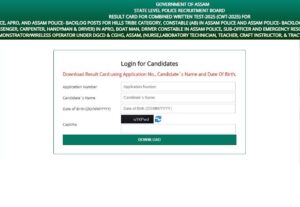Table of Contents
Context: The Report based on the Multiple Indicator Survey of the National Sample Survey Office 78th round has been recently released.
What is Multiple Indicator Survey (MIS) Report?
- Survey: The National Sample Survey Office (NSSO) carried out the Multiple Indicator Survey (MIS) covering the entire India in its 78th round.
- The survey was initially planned to be conducted during the period January-December2020 but the field work was extended till 15.08.2021, due to the Covid-19 pandemic.
- NSSO: National Sample Survey Office (NSSO) headed by a Director General is responsible for conduct of large-scale sample surveys in diverse fields on All India basis.
- It is under Ministry of Statistics and Programme Implementation.
- Objectives of the MIS were:
- To collect information for developing estimates of some important Sustainable Development Goal (SDG) indicators; and
- To collect information Purchase/Construction of house(s)/ flat(s) by the household for residential purpose after 31.03.2014 and information on Migration.
- Sample Design of MIS:
- The whole of the Indian Union was surveyed except for some villages of Andaman and Nicobar Islands which were difficult to access.
- In this survey, Two Stage Stratified Sampling was used, where First Stage Unit (FSU) were villages/sub-units (SUs) in rural areas, Urban Frame Survey (UFS) blocks/SUs in urban areas. The FSUs were allocated to States and UTs in proportion to the population as per Census 2011.
- The Second Stage Units (SSUs) were households in both rural and urban areas. The selection of FSUs and SSUs were done by Simple Random Sampling without Replacement (SRSWOR).
- The whole of the Indian Union was surveyed except for some villages of Andaman and Nicobar Islands which were difficult to access.
- Sampling Method:
- Out of the total number of 14,516 FSUs allocated for the survey at the all-India level, a total of 14,266 FSUs (8,469 rural and 5,797 urban) were surveyed for MIS.
- The total number of households surveyed was 2,76,409 (1,64,529 in rural areas and 1,11,880 in urban areas).
- Total number of persons enumerated was 11,63,416 (7,13,501 in rural areas and 4,49,915 in urban areas), at the all-India level.
Key Findings of the Report
| Hand Washing Facility | About 77.4% of the persons in the rural areas and about 92.7% in the urban areas had access to hand washing facility with water within the premises. |
| Sources for Cooking | About 49.8% of households in the rural areas and about 92.0% in the urban areas used clean fuel as primary source of energy for cooking.
Clean fuel refers to LPG, other natural gas, gobar gas, other biogas, electricity (including generated by solar/wind power generators) and solar cooker. 33.8% of households in India use unclean sources such as firewood, chips and crop residue as the primary source of fuel for cooking. |
| Formal and Non-Formal Education | About 33% of persons in rural areas and about 39.4% of persons in urban areas of age 15-29 years were in formal and non-formal education and training for the 12 months preceding the survey.
Also, 30.2% of persons in rural areas and about 27.0% of persons in urban areas of age 15-24 years were not in education, employment or training as on date of survey. |
| Access to Mobile Phone | About 67.8% of persons aged 18 years and above in rural areas and about 83.7 % aged 18 years and above in urban areas used mobile phone with active sim cards. |
| Bank Accounts | Among the persons of age 18 years and above, about 89.3% in rural areas and about 89.6 % in urban areas had an account individually or jointly in any bank/other financial institution. |
| Indebtedness | 15,809 adults per Lakh were indebted to some institutional/non-institutional agency. |
| Access to Drinking Water | 33.7% of households in India had their principal source of drinking water outside their premises. |
| Migration | Among males, employment was the main reason for migration, being 38.7 %in rural areas and 56.1% in urban areas.
For females, marriage was the main reason for migration, being 93.4% in rural areas and 71.5% in urban areas, it stated. |
| Roads | About 92.5% of households in rural areas reported availability of all-weather roads within 2 km from the place of living. |
| Access to Toilets | About 78.7 % of the households in the rural areas and about 97.1% of the households in the urban areas had access to latrine. |
| New Flats | 11.2% of households in rural and about 7.2% in urban areas purchased/constructed any new house/flat for residential purpose after 31.03.2014. |
Way Forward
- This survey is taken up for the first time in 78th Round of NSS to collect information required for developing some important indicators of Sustainable Development Goals 2030.
- It is important as facts and figures are a basic necessity for evidence based planning and formulation of policies or programmes. It is also required for evaluation of the impact of social and economic policies.


 Assam Police Constable Cut off 2025
Assam Police Constable Cut off 2025
 National Supercomputing Mission (NSM)
National Supercomputing Mission (NSM)
 Asola Bhati Wildlife Sanctuary, Location...
Asola Bhati Wildlife Sanctuary, Location...





















